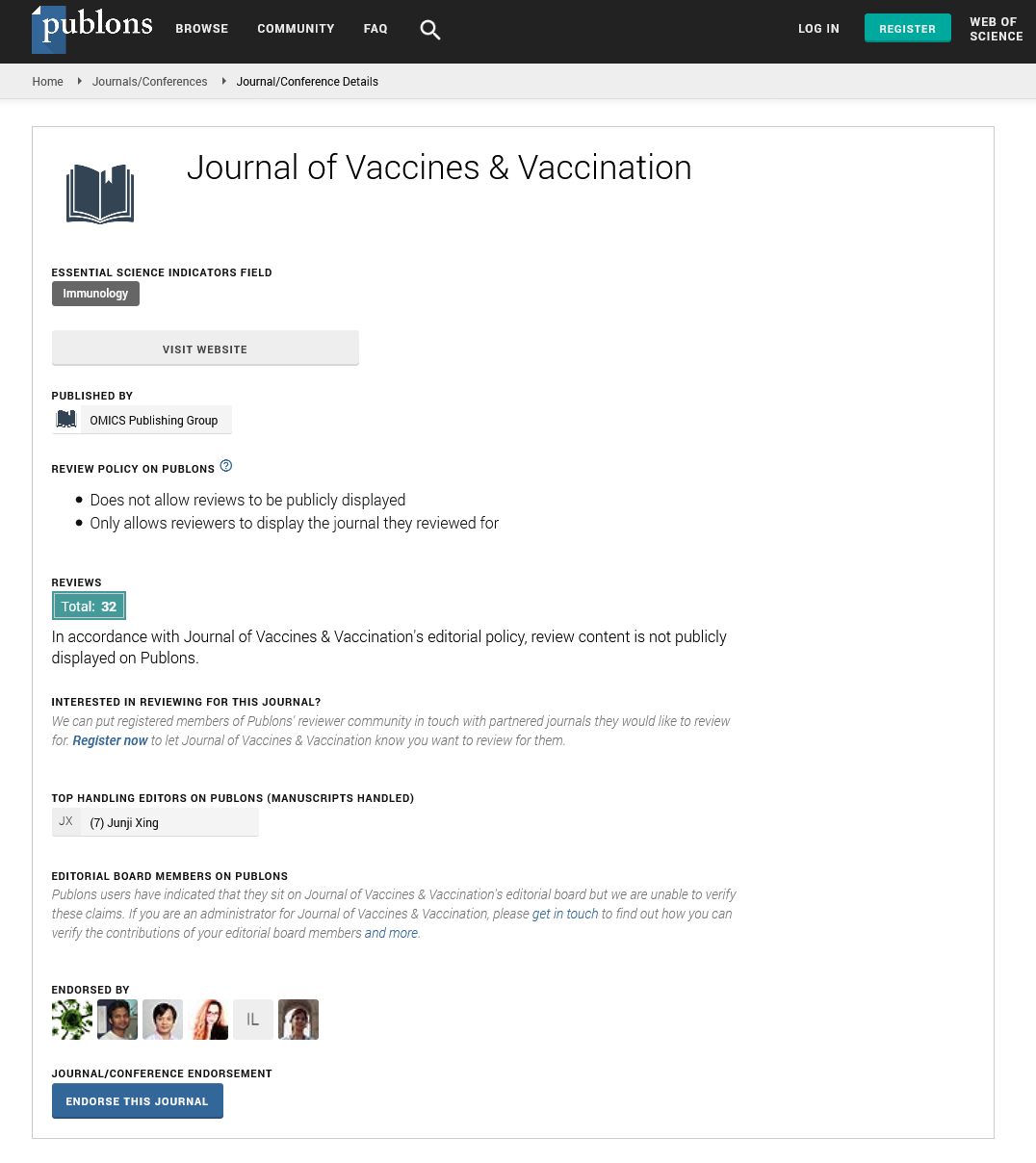Indexed In
- Academic Journals Database
- Open J Gate
- Genamics JournalSeek
- JournalTOCs
- China National Knowledge Infrastructure (CNKI)
- Scimago
- Ulrich's Periodicals Directory
- RefSeek
- Hamdard University
- EBSCO A-Z
- OCLC- WorldCat
- Publons
- MIAR
- University Grants Commission
- Geneva Foundation for Medical Education and Research
- Euro Pub
- Google Scholar
Useful Links
Share This Page
Open Access Journals
- Agri and Aquaculture
- Biochemistry
- Bioinformatics & Systems Biology
- Business & Management
- Chemistry
- Clinical Sciences
- Engineering
- Food & Nutrition
- General Science
- Genetics & Molecular Biology
- Immunology & Microbiology
- Medical Sciences
- Neuroscience & Psychology
- Nursing & Health Care
- Pharmaceutical Sciences
Plant Expressed Vaccines Produce A Novel Synergistic Response Upon Co-delivery
16th World Congress on Virology, Emerging Diseases & Vaccines
May 11,2021 | Webinar
Mary D. Pardhe
The Biodesign Institute at Arizona State University, AZ 85281, USA
Scientific Tracks Abstracts: Jour Vacc Clin Trial
Abstract:
We have previously shown that plant-made recombinant immune complex (RIC) vaccines that consist of an antibody fused to a desired antigen and containing an antibody-specific epitope tag are a robust platform to improve the immunogenicity of weak antigens. In this study, we altered the antigen fusion site on the RIC platform to accommodate an N-terminal fusion to the IgG heavy chain (N-RIC) with a resulting 40% improvement in RIC expression over the normal C-terminal fusion (C-RIC). As a model antigen, the Zika envelope domain III (ZE3) protein was used. ZE3 has been identified as a safe and effective vaccine candidate, however, it is poorly immunogenic. Both types of RICs containing ZE3 were efficiently assembled in plants, purified to >95% homogeneity with a simple one-step purification, strongly bound complement receptor C1q, and elicited strong ZE3-specific antibody titers that correlated with ZIKV neutralization. When either N-RIC or C-RIC was co-delivered with hepatitis B core (HBc) virus-like particles (VLP) displaying ZE3, the combination elicited 5-fold greater antibody titers (>1,000,000) and more strongly neutralized ZIKV than either RICs or VLPs alone, after only two doses without adjuvant. These findings demonstrate that antigens that require a free N-terminus for optimal antigen display can be used with the RIC system and that plantmade RICs and VLPs are highly effective vaccines targeting ZE3. Thus, the RIC platform can be more generally applied to a wider variety of antigens to conveniently produce vaccine candidates against diseases.

